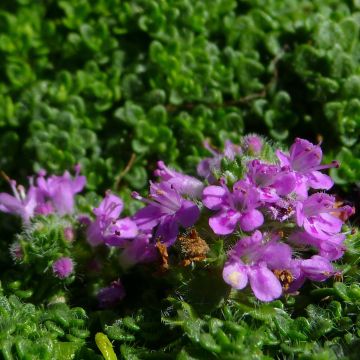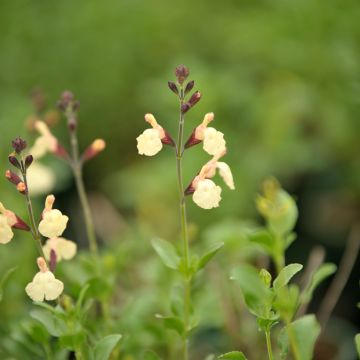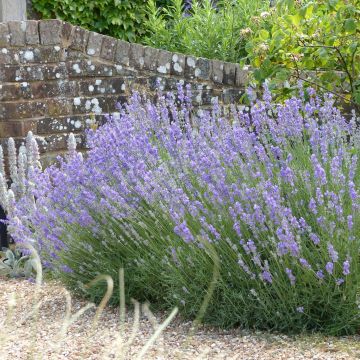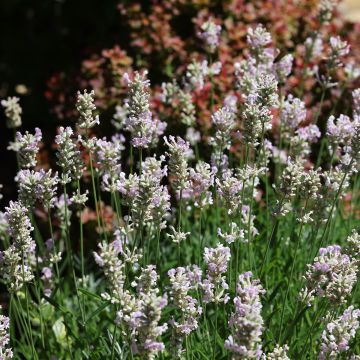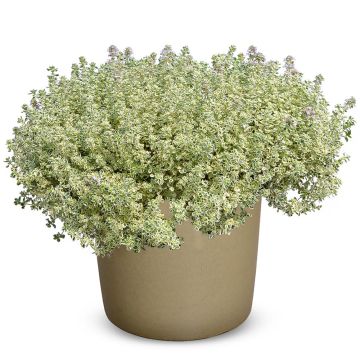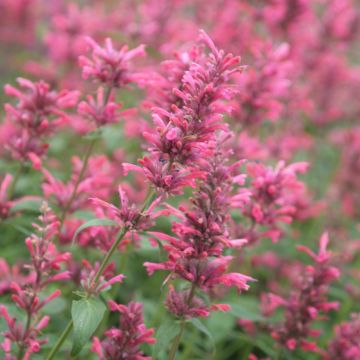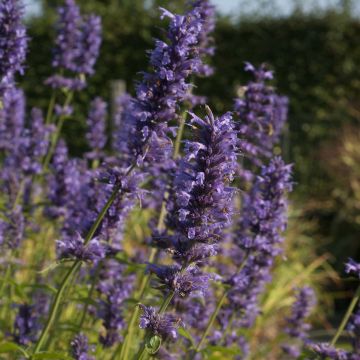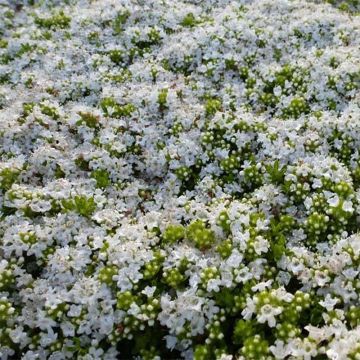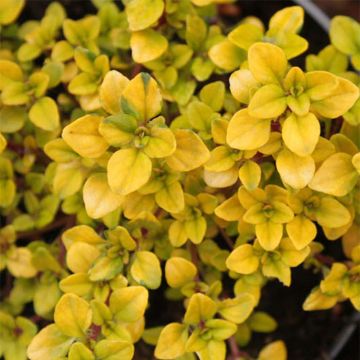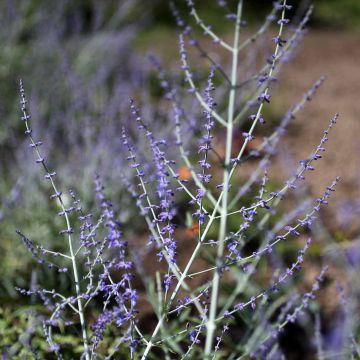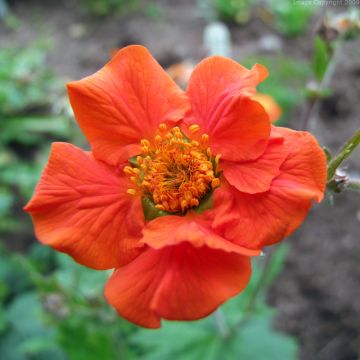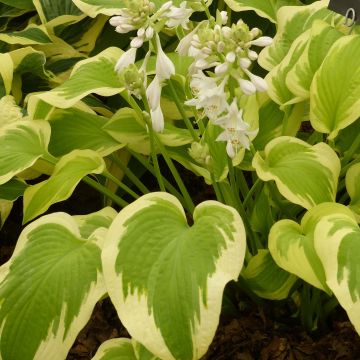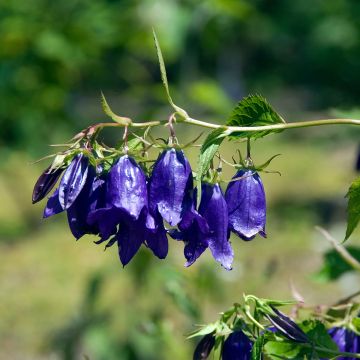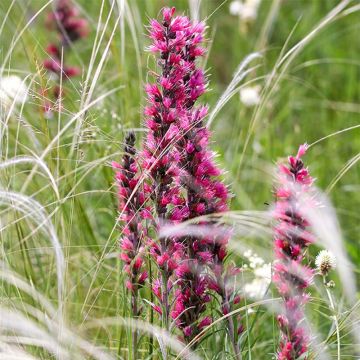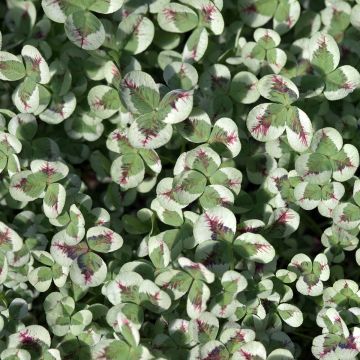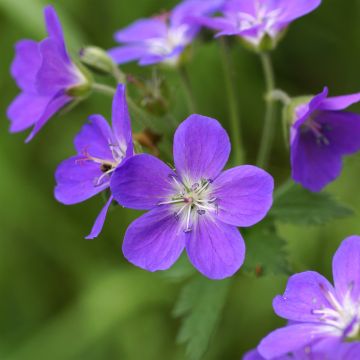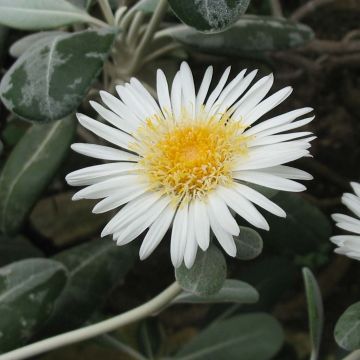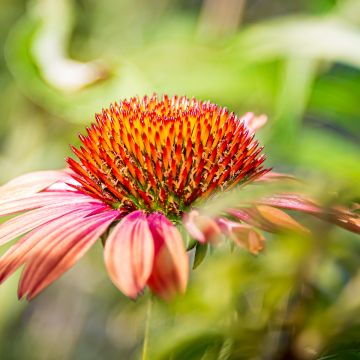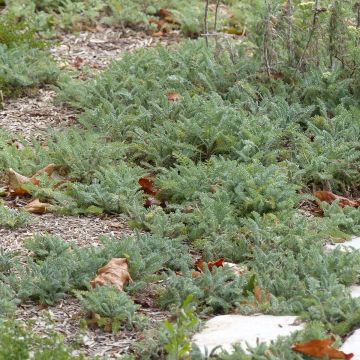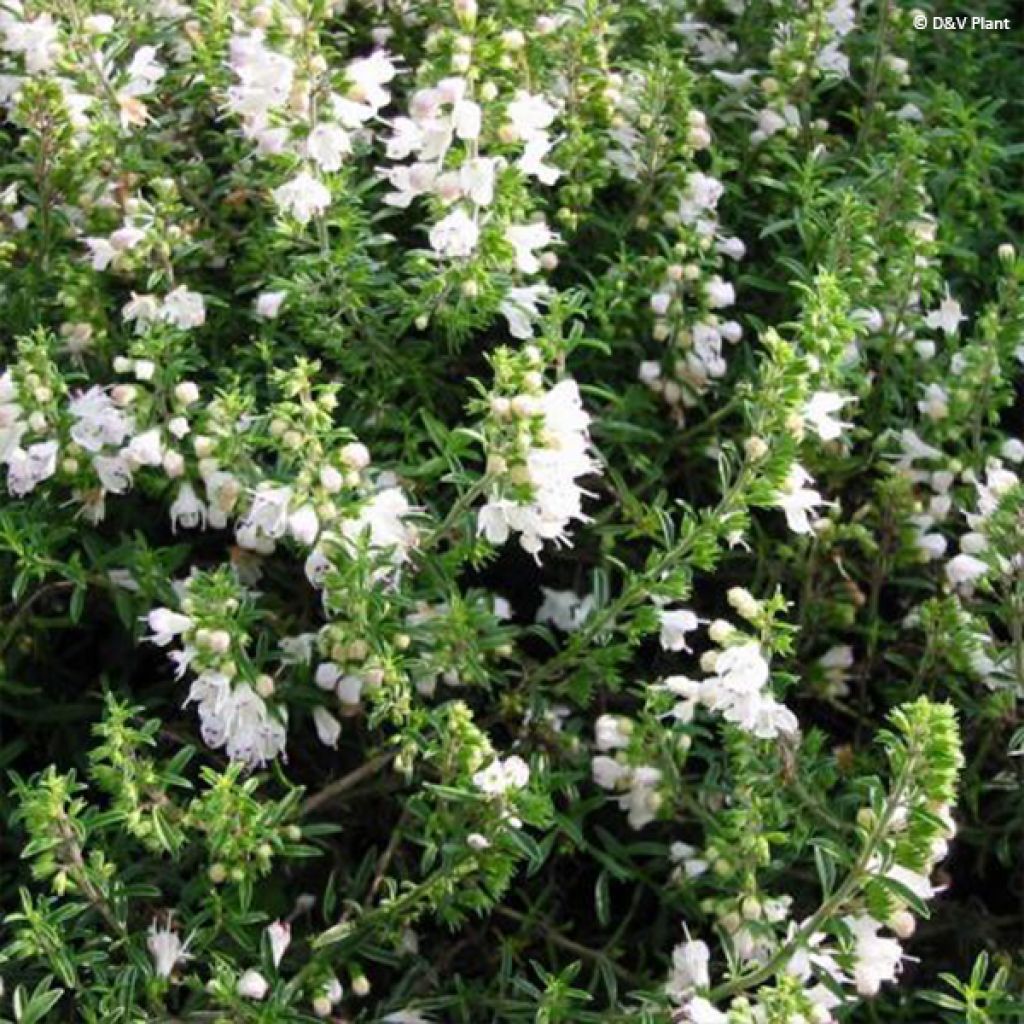

Sarriette vivace rampante - Satureja spicigera
Satureja spicigera
Satureja spicigera
Creeping Savory
This item cannot be shipped to the selected country
Delivery charge from €5.90
More information
Schedule delivery date,
and select date in basket
This plant carries a 12 months recovery warranty
More information
We guarantee the quality of our plants for a full growing cycle, and will replace at our expense any plant that fails to recover under normal climatic and planting conditions.
From €5.90 for pickup delivery and €6.90 for home delivery
Express home delivery from €8.90.

Does this plant fit my garden?
Set up your Plantfit profile →
Description
The creeping or prostrate savory, in Latin Satureja spicigera, is a plant that is both very honey-bearing, aromatic, medicinal, and culinary. Covering the ground with its long stems adorned with small, very aromatic dark green foliage, it also offers a beautiful white and honey-bearing flowering at the beginning of summer. In cuisine, its foliage is used to pleasantly flavour stews and grilled dishes. It is also a medicinal plant with recognized properties. Very comfortable in slightly arid and sun-drenched places, Caucasian savory finds its place in ornamental gardens, bordering flower beds, or in rockeries.
The creeping savory belongs to the family Lamiaceae or Labiatae, just like the thyme with which it is closely related. This botanical species originates from Western Asia, Turkey, Iran, and the Caucasus, where it spreads in full sun on dry and eroded slopes as well as in rocky scree. Its cold resistance is excellent (down to -15°C (5°F)), but in well-drained soils. It also tolerates dry to very dry summers once well rooted. Its foliage persists in winter.
This is a perennial plant with woody base whose branches, arched towards the ground, form a spread-out tuft about 15-20cm (6-8in) high and 40-50cm (16-20in) wide. Its hairy, square-sectioned stems bear small, opposite, leathery and shiny, linear, dark green leaves that are very fragrant when crushed, with a spicy aroma. Flowering generally occurs in June in the south of France, but from July to August further north. At the ends of the stems, inflorescences in whorls or clusters of white flowers with 2 lips are born, which are heavily visited by bees. Outside its preferred regions, savory does not age well: we recommend renewing your plantings every 5 years.
Satureja spicigera is cultivated like thyme, lavender, rosemary, and marjoram, with which it can be perfectly associated on a dry slope or in a very sunny rockery. Pot cultivation is possible in a loose and well-drained soil mix. You can arrange the border of a gravelled alley by alternating, for example, savory plants with different varieties of thyme (Thymus capitata, ciliatus, herba-barona), white germander (Teucrium chamaedrys), small sedums, cotton lavenders, etc. Pruning once a year, in September, will be enough to keep it looking neat. One of the charms of this type of arrangement lies in the scents that all these plants diffuse after a hot day: they blend in a complex fragrance to be savored with closed eyes: intense, captivating, unforgettable, it constitutes the quintessence of the Mediterranean countryside.
In cuisine: savory leaves are harvested in the morning. Wait until the plant is at least one year old. For preservation, harvest the leaves at the beginning of flowering and dry them to retain their flavour. They are used to flavor salads, sauces, stews, legumes, and grilled dishes. The essential oil of Satureja contained in the leaves has antiseptic, stimulating, and digestive properties.
In the vegetable garden or garden, savory repels aphids. It pairs well with peas, beans, and broad beans, protecting them from insects. But keep it away from sage, turnips, and radishes.
Report an error about the product description
Flowering
Foliage
Plant habit
Botanical data
Satureja
spicigera
Lamiaceae
Creeping Savory
Caucasus
Other Herb perennials
Planting and care
Satureja spicigera is planted in spring or autumn in a very well-drained soil (stony, rocky or sandy). It does not tolerate heavy and compact soils, especially in winter. It strongly prefers limestone soils, but it also grows in neutral or slightly acidic soils. Add coarse sand or gravel to the original soil and plant in a slight mound in a very sunny spot. Prune after flowering. Pot cultivation is preferable in regions with a too humid and cold climate in winter. Plant in a soft and well-drained potting soil in a 40 to 50cm (16 to 20in) diameter pot. The more savory grows in poor and dry soil, the more fragrant its foliage is: the production of essential oils is a defense mechanism for plants in the garrigue field.
Planting period
Intended location
Care
-
, onOrder confirmed
Reply from on Promesse de fleurs
Summer flowering perennials
Haven't found what you were looking for?
Hardiness is the lowest winter temperature a plant can endure without suffering serious damage or even dying. However, hardiness is affected by location (a sheltered area, such as a patio), protection (winter cover) and soil type (hardiness is improved by well-drained soil).

Photo Sharing Terms & Conditions
In order to encourage gardeners to interact and share their experiences, Promesse de fleurs offers various media enabling content to be uploaded onto its Site - in particular via the ‘Photo sharing’ module.
The User agrees to refrain from:
- Posting any content that is illegal, prejudicial, insulting, racist, inciteful to hatred, revisionist, contrary to public decency, that infringes on privacy or on the privacy rights of third parties, in particular the publicity rights of persons and goods, intellectual property rights, or the right to privacy.
- Submitting content on behalf of a third party;
- Impersonate the identity of a third party and/or publish any personal information about a third party;
In general, the User undertakes to refrain from any unethical behaviour.
All Content (in particular text, comments, files, images, photos, videos, creative works, etc.), which may be subject to property or intellectual property rights, image or other private rights, shall remain the property of the User, subject to the limited rights granted by the terms of the licence granted by Promesse de fleurs as stated below. Users are at liberty to publish or not to publish such Content on the Site, notably via the ‘Photo Sharing’ facility, and accept that this Content shall be made public and freely accessible, notably on the Internet.
Users further acknowledge, undertake to have ,and guarantee that they hold all necessary rights and permissions to publish such material on the Site, in particular with regard to the legislation in force pertaining to any privacy, property, intellectual property, image, or contractual rights, or rights of any other nature. By publishing such Content on the Site, Users acknowledge accepting full liability as publishers of the Content within the meaning of the law, and grant Promesse de fleurs, free of charge, an inclusive, worldwide licence for the said Content for the entire duration of its publication, including all reproduction, representation, up/downloading, displaying, performing, transmission, and storage rights.
Users also grant permission for their name to be linked to the Content and accept that this link may not always be made available.
By engaging in posting material, Users consent to their Content becoming automatically accessible on the Internet, in particular on other sites and/or blogs and/or web pages of the Promesse de fleurs site, including in particular social pages and the Promesse de fleurs catalogue.
Users may secure the removal of entrusted content free of charge by issuing a simple request via our contact form.
The flowering period indicated on our website applies to countries and regions located in USDA zone 8 (France, the United Kingdom, Ireland, the Netherlands, etc.)
It will vary according to where you live:
- In zones 9 to 10 (Italy, Spain, Greece, etc.), flowering will occur about 2 to 4 weeks earlier.
- In zones 6 to 7 (Germany, Poland, Slovenia, and lower mountainous regions), flowering will be delayed by 2 to 3 weeks.
- In zone 5 (Central Europe, Scandinavia), blooming will be delayed by 3 to 5 weeks.
In temperate climates, pruning of spring-flowering shrubs (forsythia, spireas, etc.) should be done just after flowering.
Pruning of summer-flowering shrubs (Indian Lilac, Perovskia, etc.) can be done in winter or spring.
In cold regions as well as with frost-sensitive plants, avoid pruning too early when severe frosts may still occur.
The planting period indicated on our website applies to countries and regions located in USDA zone 8 (France, United Kingdom, Ireland, Netherlands).
It will vary according to where you live:
- In Mediterranean zones (Marseille, Madrid, Milan, etc.), autumn and winter are the best planting periods.
- In continental zones (Strasbourg, Munich, Vienna, etc.), delay planting by 2 to 3 weeks in spring and bring it forward by 2 to 4 weeks in autumn.
- In mountainous regions (the Alps, Pyrenees, Carpathians, etc.), it is best to plant in late spring (May-June) or late summer (August-September).
The harvesting period indicated on our website applies to countries and regions in USDA zone 8 (France, England, Ireland, the Netherlands).
In colder areas (Scandinavia, Poland, Austria...) fruit and vegetable harvests are likely to be delayed by 3-4 weeks.
In warmer areas (Italy, Spain, Greece, etc.), harvesting will probably take place earlier, depending on weather conditions.
The sowing periods indicated on our website apply to countries and regions within USDA Zone 8 (France, UK, Ireland, Netherlands).
In colder areas (Scandinavia, Poland, Austria...), delay any outdoor sowing by 3-4 weeks, or sow under glass.
In warmer climes (Italy, Spain, Greece, etc.), bring outdoor sowing forward by a few weeks.

































